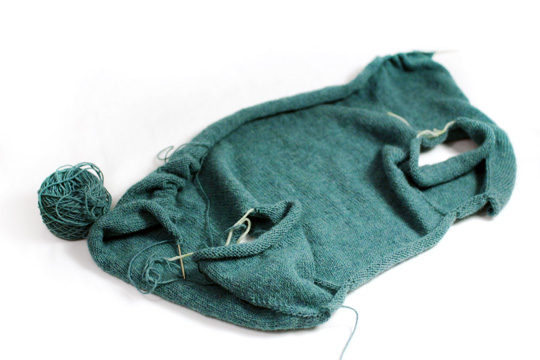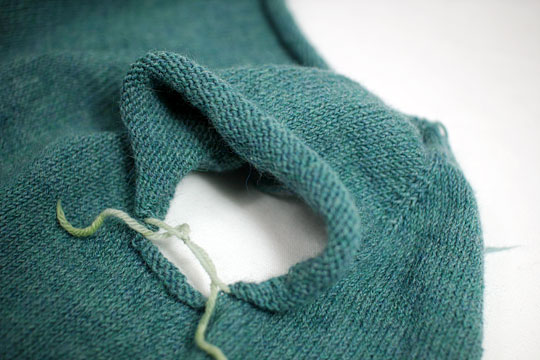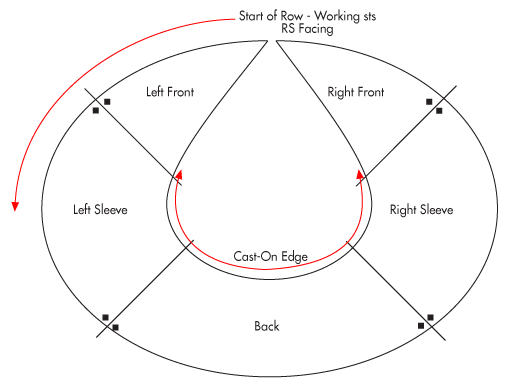
In the tons of emails we get everyday, there are some common threads and questions that land on our desk.
Here’s a recent excerpt that is of interest to beginning top-downers…
Divide for Body…
From January 30th: “I have never made a top down sweater. This is my first one and I don’t want to make another mistake
I proceeded last night and did those 2 cast on’s which appear to be under each arm. Is that correct? Did I understand that properly?”

My WIP: I’ve just recently done this myself, so I thought I’d post a picture of what my sweater looks like. :)
I’ve divided for the Body – but sometimes in the thick of it, that doesn’t make much sense, especially if it’s your first sweater.
At this point in the pattern you have three areas that exist, but only one area that you will be working on. In the picture above, I’ve put the Sleeves on hold and am working on the Body of the sweater.
If we backtrack a little, we’ll see that all of these areas started from the Yoke, which is the very big piece that’s been knit on from the cast on.
At the underarm area, the sweater needs to be divided into pieces: tubes for the sleeves & flat for the body of the cardigan.
The traditional way to do this is to work the 1st front sts, then place the 1st sleeve sts on hold (I use scrap yarn), then cast on sts for the underarm, then knit the Back, put the 2nd sleeve sts on hold, cast on sts for the underarm, then knit the 2nd front.

The underarm stitches are needed to create enough area to completely wrap around your arm making a tube that becomes the sleeve.
Remember: you started with basically a flat circle of fabric and now you are evolving it into cylinders that mimic the actual shape of your body.



I love top down knitting, and have found using scrap yarn is preferable to stitch holders, because of the flexibility. When I have used stitch holders, the end stitches tend to get stretched out a bit. Doesn’t happen with scrap yarn.
Good point!
I like using scrap yarn because you can try on the sweater — it makes a flexible holder in those areas.